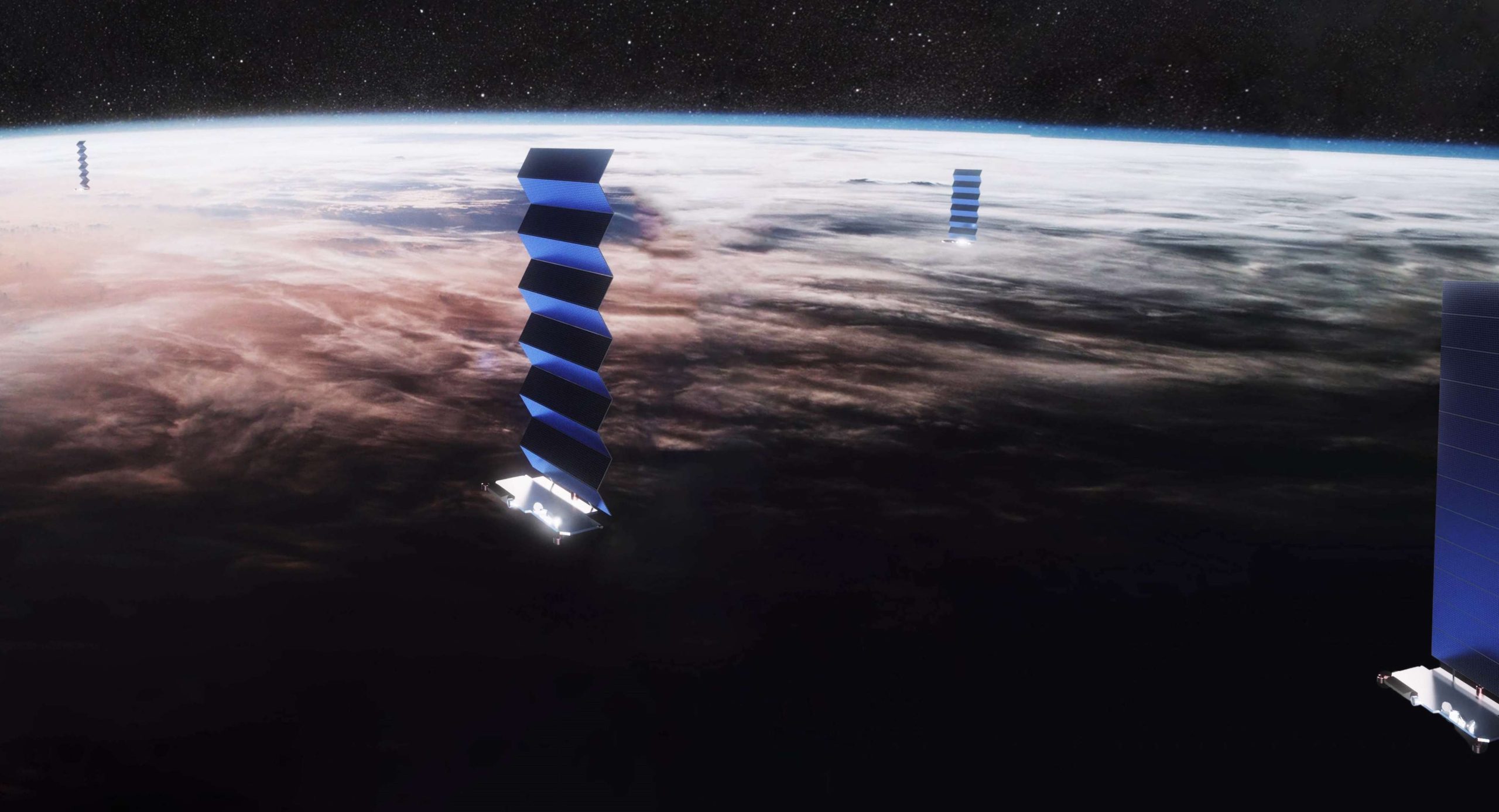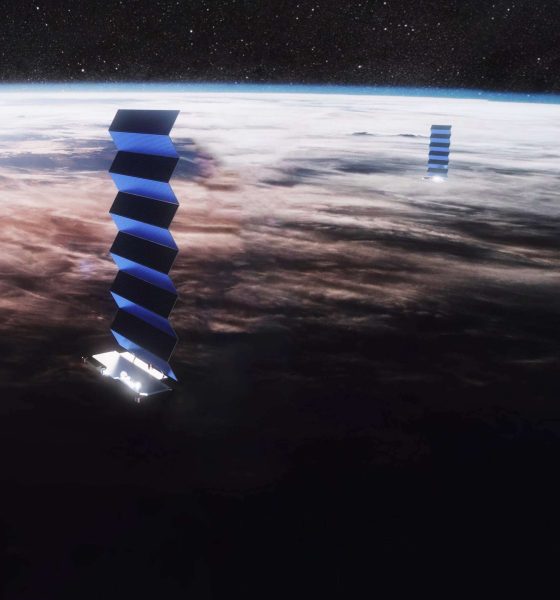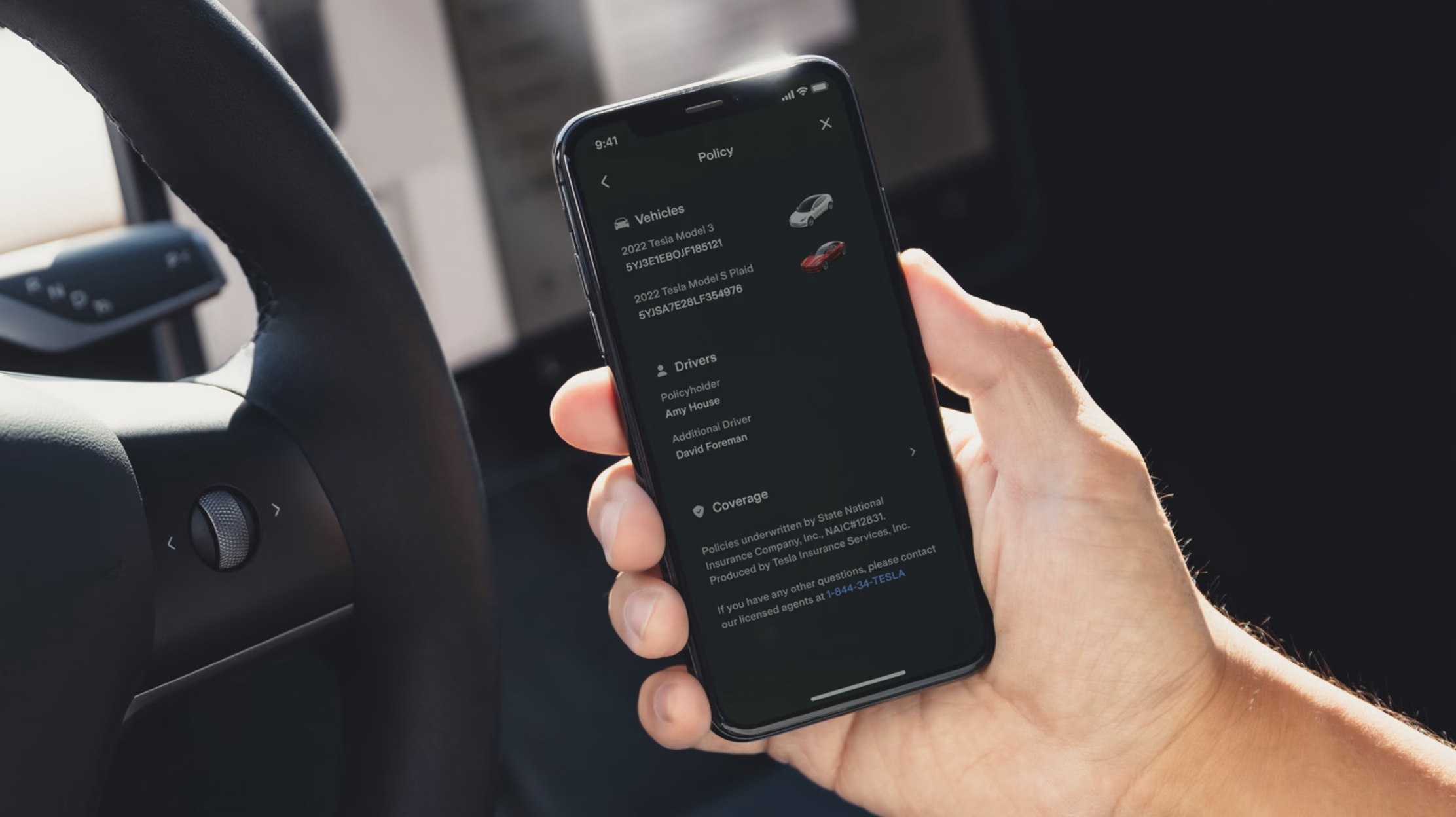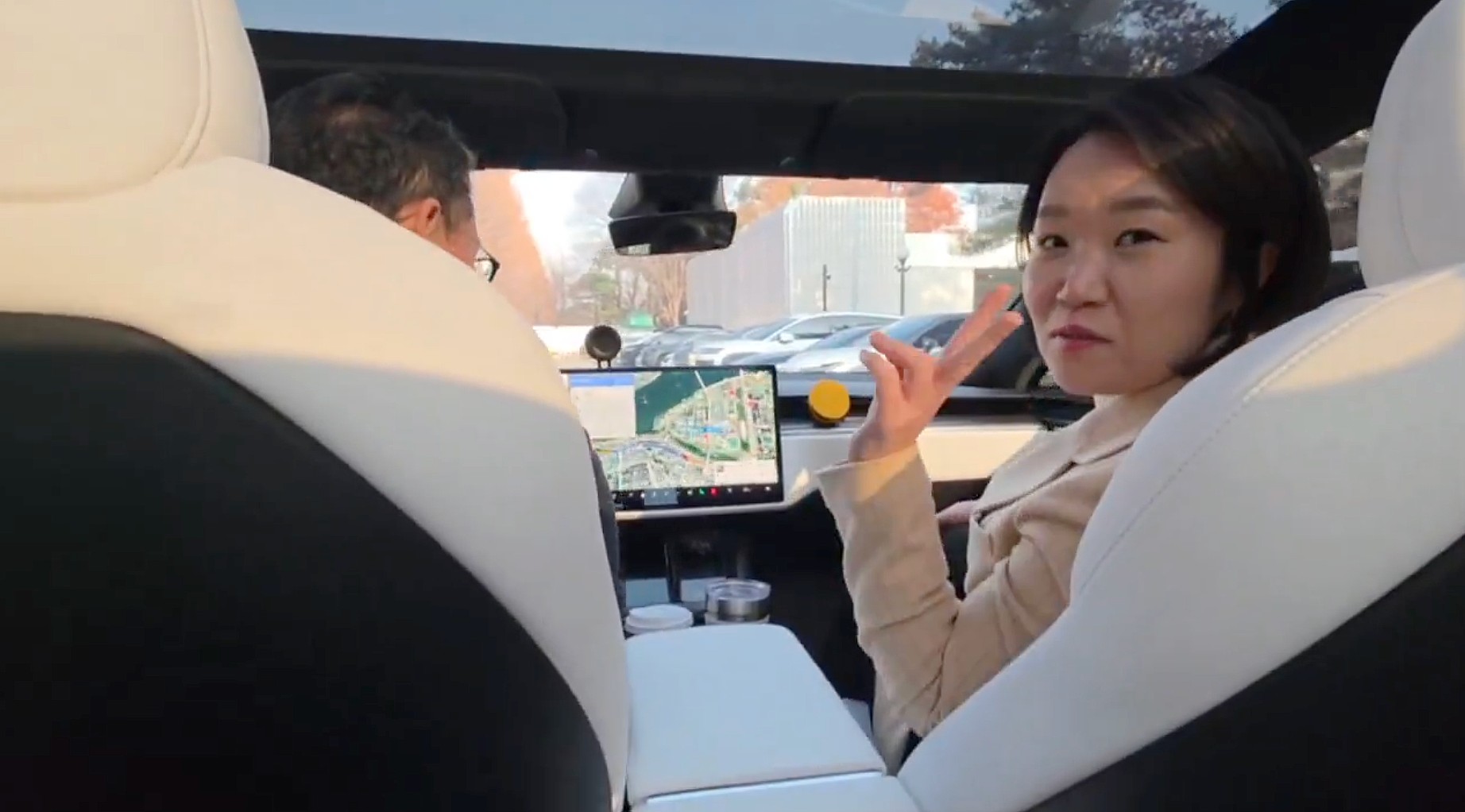

News
SpaceX’s Starlink satellites spark fights between astronomy, spaceflight fans
Just a handful of hours after SpaceX successfully placed all 60 of its first Starlink v0.9 satellites in orbit, ground observers began capturing and sharing spectacular nighttime views of the spacecraft. Soon after, fans and practitioners of astronomy and spaceflight began bickering.
The topic of concern: light pollution, not from lights on the ground but from sunlight-reflecting satellites in orbit. Immediately after launch, the ‘train’ of 60 Starlink satellites were undeniably spectacular, easily visible to the eye and as bright or brighter than the brightest stars in the sky. For the most part, reactions seemed to lean more towards awe than concern, but it didn’t take long for people to begin extrapolating from 60 satellites to Starlink’s peak of ~11,900 (an increase of 200X), and some responses began to paint SpaceX’s constellation in a more negative light.
Fans, communicators, and practitioners of astronomy quickly grew into the loudest voice in the room, as fans of SpaceX and Elon Musk started to engage, ultimately making it clear that low Earth orbit (LEO) megaconstellations could soon become a highly controversial topic for unexpected reasons. As is typical of humans in the age of social media, the gentlest hint of controversy and criticism swelled into stone-throwing between two crystallized sides unwilling to breathe and engage in civil debate.
Meanwhile, barely 24-48 hours had elapsed since the first Starlink satellite reached orbit – not their final orbit (550 km) but an insertion orbit at ~450 km. Almost immediately, serious observers noted that the Starlink satellites were rapidly spreading out and dimming as they got to work raising their orbits with onboard ion thrusters. Situated in an urban area, Teslarati photographer Tom Cross described the Starlink ‘train’ as “way too faint to capture” on the evening of May 25th, although they were still subtly visible to the naked eye.
From a practical perspective, it should come as little to no surprise that Starlink satellites are visible – even highly visible – from the ground, particularly in areas with minimal light pollution. SpaceX’s flat-panel design and the location of their antennas means that each satellite will have a metallic, shiny surface constantly facing towards the ground, perfect for reflecting sunlight. Additionally, every satellite has a fairly large solar array, likely measuring about 3m by 12m (10ft by 40 ft). Combined, the 60 satellites have a collective solar array area of more than 2000 square meters (21,500 ft^2), nearly the same size as the International Space Station’s football field-sized arrays.

Here’s a 30 second long exposure of #starlink satellites marching across the sky. I saw them, framed this up, and started it as quickly as I could so there is zero creativity or planning here but I GOT THEM! Aghhhh. @elonmusk — you seen your satellites overhead yet? pic.twitter.com/91KzFKOUq1— ?Trevor Mahlmann (@TrevorMahlmann) May 25, 2019
An astronomical disruption?
However, the visibility of SpaceX’s Starlink satellites for laypeople was never the most contentious concern or a leader of vitriolic responses. Rather, even if the ~12,000 proposed Starlink satellites are minimally visible to the naked eye, they will almost certainly still appear in the sort of long-exposure images used by astronomers to catalog, track, and better understand the universe. This is a reasonable concern and one that should come as little to no surprise, given that astronomy already deals with the thousands of operational and defunct satellites, rocket upper stages, and pieces of large space debris already in Earth orbit.
The problem with giant LEO constellations is that satellites in LEO can appear far brighter and far larger than the traditional geostationary satellites used to provide communications services. This is a critical benefit for the spacecraft, as geostationary distances (~36,000 km, 22,000 mi) create major latency (lag) problems for communications networks.
Will Starlink (alongside other constellations from Telesat, OneWeb, and LeoSat) destroy the night sky as we know it, ruining the perfectly untouched cosmos for the rest of eternity? Will Starlink immediately create a global utopia by affordably connecting every single human on Earth to the internet, all while being completely invisible and undetectable from the ground? No, no, no, and no. As with 99.99% of things, the reality will fall somewhere in the middle and its consequences and benefits will be far more grey than black and white.
Update: Elon Musk addresses the controversy over Starlink light pollution
As more levelheaded spaceflight fans and astronomers thankfully point out, we need to wait weeks – if not months or even years – to actually understand the potential impact LEO mega-constellations might have on science and society. It would likely be beneficial for SpaceX – thus far silent – to open a dialogue with those concerned about those potential impacts. It would also serve astronomy well to find ways to cope with space-based infrastructure meant to eventually benefit tens of millions to billions of people, ranging from astronomers themselves to underprivileged members of developing societies. To accept tradeoffs and make compromises is to be human.

Check out Teslarati’s Marketplace! We offer Tesla accessories, including for the Tesla Cybertruck and Tesla Model 3.

News
Tesla Insurance officially expands to new U.S. state
Tesla’s in-house Insurance program first launched back in late 2019, offering a new way to insure the vehicles that was potentially less expensive and could alleviate a lot of the issues people had with claims, as the company could assess and repair the damage itself.

Tesla Insurance has officially expanded to a new U.S. state, its thirteenth since its launch in 2019.
Tesla has confirmed that its in-house Insurance program has officially made its way to Florida, just two months after the company filed to update its Private Passenger Auto program in the state. It had tried to offer its insurance program to drivers in the state back in 2022, but its launch did not happen.
Instead, Tesla refiled the paperwork back in mid-October, which essentially was the move toward initiating the offering this month.
BREAKING: Tesla Insurance has just officially launched in Florida.
This is the first new state to receive @Tesla Insurance in more than 3 years. In total, Tesla insurance is now available in 13 U.S. states (map in thread below of all the states).
Tesla Insurance in Florida uses… pic.twitter.com/bDwh1IV6gD
— Sawyer Merritt (@SawyerMerritt) December 17, 2025
Tesla’s in-house Insurance program first launched back in late 2019, offering a new way to insure the vehicles that was potentially less expensive and could alleviate a lot of the issues people had with claims, as the company could assess and repair the damage itself.
It has expanded to new states since 2019, but Florida presents a particularly interesting challenge for Tesla, as the company’s entry into the state is particularly noteworthy given its unique insurance landscape, characterized by high premiums due to frequent natural disasters, dense traffic, and a no-fault system.
Annual average premiums for Florida drivers hover around $4,000 per year, well above the national average. Tesla’s insurance program could disrupt this, especially for EV enthusiasts. The state’s growing EV adoption, fueled by incentives and infrastructure development, aligns perfectly with Tesla’s ecosystem.
Moreover, there are more ways to have cars repaired, and features like comprehensive coverage for battery damage and roadside assistance tailored to EVs address those common painpoints that owners have.
However, there are some challenges that still remain. Florida’s susceptibility to hurricanes raises questions about how Tesla will handle claims during disasters.
Looking ahead, Tesla’s expansion of its insurance program signals the company’s ambition to continue vertically integrating its services, including coverage of its vehicles. Reducing dependency on third-party insurers only makes things simpler for the company’s automotive division, as well as for its customers.
News
Tesla Full Self-Driving gets sparkling review from South Korean politician
“Having already ridden in an unmanned robotaxi, the novelty wasn’t as strong for me, but it drives just as well as most people do. It already feels like a completed technology, which gives me a lot to think about.”

Tesla Full Self-Driving got its first sparkling review from South Korean politician Lee So-young, a member of the country’s National Assembly, earlier this week.
Lee is a member of the Strategy and Finance Committee in South Korea and is a proponent of sustainable technologies and their applications in both residential and commercial settings. For the first time, Lee was able to utilize Tesla’s Full Self-Driving technology as it launched in the country in late November.
Her thoughts on the suite were complimentary to the suite, stating that “it drives just as well as most people do,” and that “it already feels like a completed technology.”
드디어 오늘, 서울에서 테슬라 FSD 체험 했습니다.
JiDal Papa님의 모델S 협찬에 힘입어^^ 파파님 정말 감사합니다.
국회 -> 망원시장 -> 홍익대 -> 국회 복귀 코스였고요.
이미 무인 로보택시를 타봐서 그런지 신기함은
덜했지만, 웬만한 사람만큼 운전을 잘하네요.이미 완성된 기술이라고… pic.twitter.com/8pAidHBpRG
— 이소영 국회의원 (Soyoung Lee) (@im_soyounglee) December 17, 2025
Her translated post says:
“Finally, today I got to experience Tesla FSD in Seoul. Thanks to the Model S sponsored by JiDal Papa^^, I’m truly grateful to Papa. The route was from the National Assembly -> Mangwon Market -> Hongik University -> back to the National Assembly. Having already ridden in an unmanned robotaxi, the novelty wasn’t as strong for me, but it drives just as well as most people do. It already feels like a completed technology, which gives me a lot to think about. Once it actually spreads into widespread use, I feel like our daily lives are going to change a lot. Even I, with my license gathering dust in a drawer, don’t see much reason to learn to drive a manual anymore.”
Tesla Full Self-Driving officially landed in South Korea in late November, with the initial launch being one of Tesla’s most recent, v14.1.4.
It marked the seventh country in which Tesla was able to enable the driver assistance suite, following the United States, Puerto Rico, Canada, China, Mexico, Australia, and New Zealand.
It is important to see politicians and figures in power try new technologies, especially ones that are widely popular in other regions of the world and could potentially revolutionize how people travel globally.
News
Tesla dispels reports of ‘sales suspension’ in California
“This was a “consumer protection” order about the use of the term “Autopilot” in a case where not one single customer came forward to say there’s a problem.
Sales in California will continue uninterrupted.”

Tesla has dispelled reports that it is facing a thirty-day sales suspension in California after the state’s Department of Motor Vehicles (DMV) issued a penalty to the company after a judge ruled it “misled consumers about its driver-assistance technology.”
On Tuesday, Bloomberg reported that the California DMV was planning to adopt the penalty but decided to put it on ice for ninety days, giving Tesla an opportunity to “come into compliance.”
Tesla enters interesting situation with Full Self-Driving in California
Tesla responded to the report on Tuesday evening, after it came out, stating that this was a “consumer protection” order that was brought up over its use of the term “Autopilot.”
The company said “not one single customer came forward to say there’s a problem,” yet a judge and the DMV determined it was, so they want to apply the penalty if Tesla doesn’t oblige.
However, Tesla said that its sales operations in California “will continue uninterrupted.”
It confirmed this in an X post on Tuesday night:
This was a “consumer protection” order about the use of the term “Autopilot” in a case where not one single customer came forward to say there’s a problem.
Sales in California will continue uninterrupted.
— Tesla North America (@tesla_na) December 17, 2025
The report and the decision by the DMV and Judge involved sparked outrage from the Tesla community, who stated that it should do its best to get out of California.
One X post said California “didn’t deserve” what Tesla had done for it in terms of employment, engineering, and innovation.
Tesla has used Autopilot and Full Self-Driving for years, but it did add the term “(Supervised)” to the end of the FSD suite earlier this year, potentially aiming to protect itself from instances like this one.
This is the first primary dispute over the terminology of Full Self-Driving, but it has undergone some scrutiny at the federal level, as some government officials have claimed the suite has “deceptive” naming. Previous Transportation Secretary Pete Buttigieg was vocally critical of the use of the name “Full Self-Driving,” as well as “Autopilot.”








